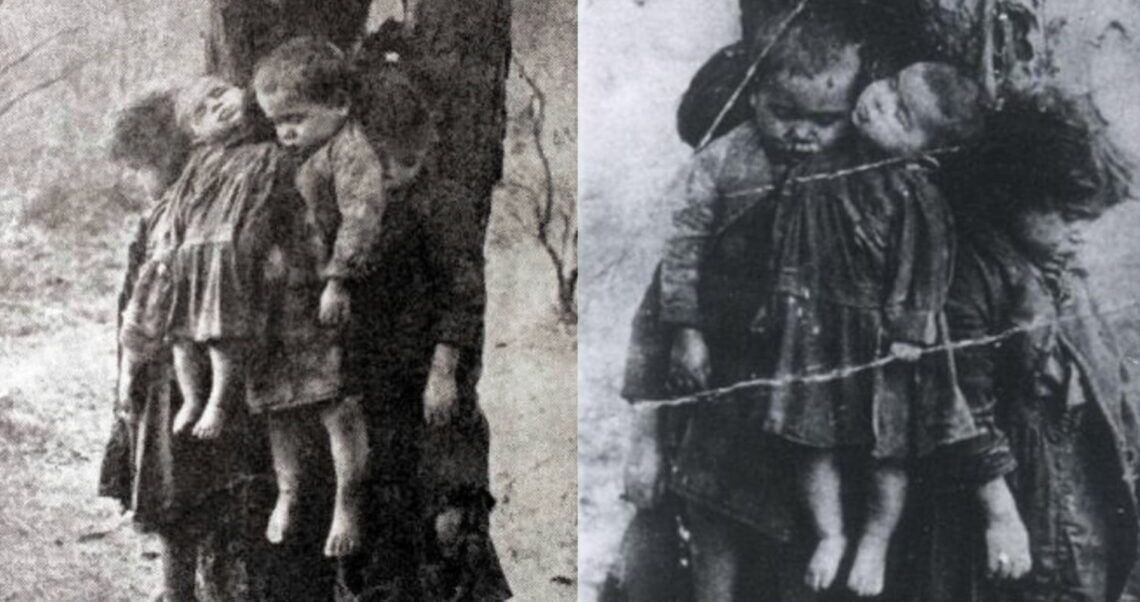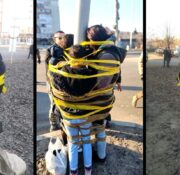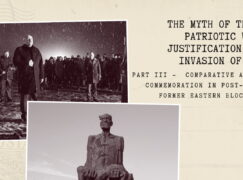Recently, a photo appeared on social media (in various variants), allegedly depicting victims of the Volhynia Massacre or other crimes committed by UPA/OUN soldiers. The photo is accompanied by an anti-Ukrainian narrative, connecting historical events with the ongoing war in Ukraine and its social consequences.
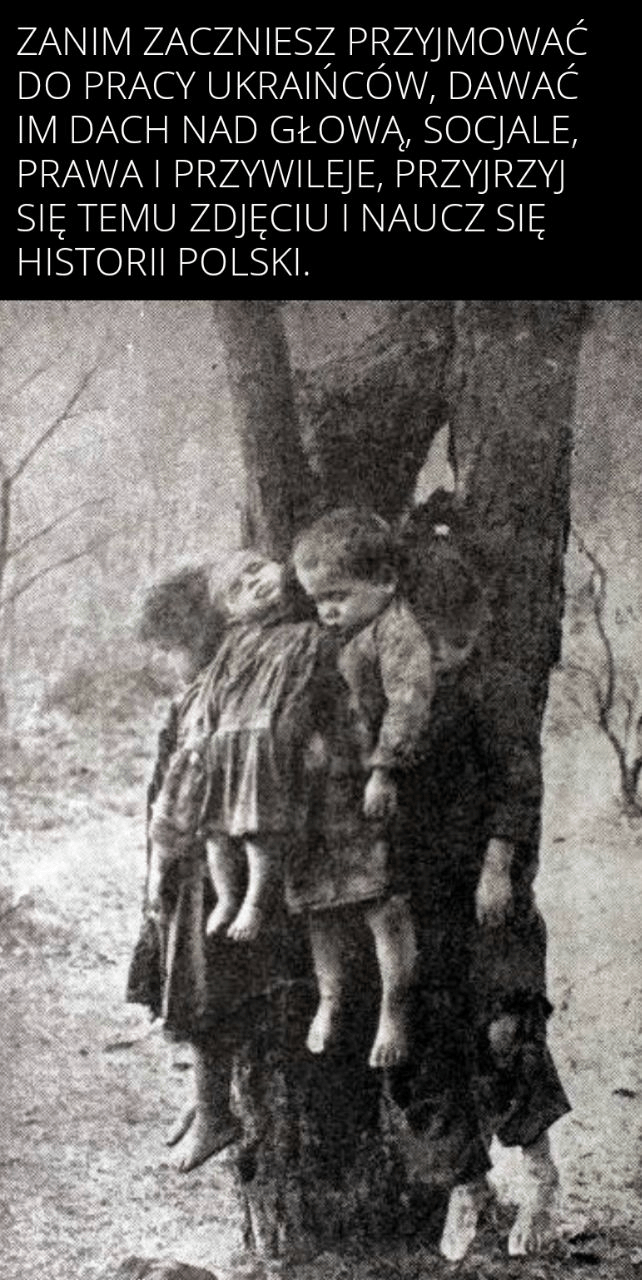
The photo along with the anti-Ukrainian narrative appears not only on social media, but also on various forums, discussion groups or blogs. On this website we can find a post from 11 June, 2022, in which this cruel act is attributed to UPA soldiers. (Caution! Drastic images.) So let’s take a closer look at the photo itself and the story that accompanies it.
Other contexts and image search
To find other references and contexts for this photo, we have used the image search method in the most popular search engines: Google, Bing and Yandex.



As we can see, Google, Bing and Yandex all return results referring to the crimes committed by Ukrainian nationalists during the Second World War, or more specifically the Volhynia Massacre, such as this entry. However, we can also find references to a web page called “Wianek i rysy. Sprawa Marianny Dolińskiej” (Wreath and Creases. The case of Marianna Dolińska).
The case of Marianna Dolińska
The link directs to a scientific journal Widok. Teorie i Praktyki Kultury Wizualnej. The fact that the journal self-proclaims itself scientific does not prove its reliability and credibility. Recently, we described the problem of the so-called predatory journals on our website, so let’s check if the Widok. Teorie i Praktyki Kultury Wizualnej magazine can be considered a reliable scientific journal.
As we read on the journal’s website, it is subject to reviews, and the course of the review process is described in detail on the page. The journal is indexed on EIRH+, EBSCO, as well as on the ministerial list, where it received the score of 70 points. Therefore, the article published on the journal’s website can be considered a reliable source of scientific knowledge, subject to the review process in accordance with academic standards.
The article entitled “Wianek i rysy. Sprawa Marianny Dolińskiej” (Wreath and Creases. The case of Marianna Dolińska) by Sara Herczyńska describes the true history of the photograph known as the “wreath of children”, which has been falsely used as an illustration of crimes committed by Ukrainian nationalists.
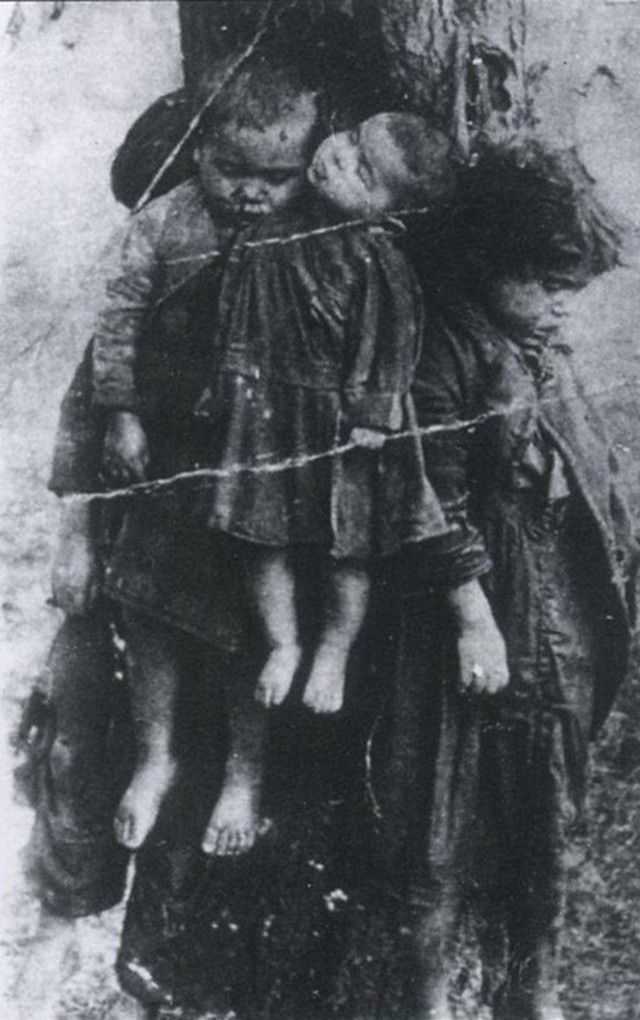
In fact, the photo dates back to 1923 and was taken by a police photographer. As we read in the article, on the night of 11-12 December in the village of Antoniówka near Radom, a 32-year-old Romani (a Roma woman) Marianna Dolińska hanged four of her children. As she later claimed, her extremely difficult social and living situation forced her to kill her children in an attempt to save them from starvation.
After being arrested, Dolińska was under observation at the hospital in Tworki, where she was diagnosed with delusions, visual hallucinations, mental limitations, apathy and depression. Manic-depressive disease was diagnosed only in the middle of 1926, when the patient experienced an “episode of frenzy-morbid psychosis”. It was also stated that her act was an attempt to commit murder-suicide. According to the doctors from Tworki hospital, the woman initially wanted to kill the children first and then herself, but ultimately failed to do so. In 1928, Dolińska died and was buried in a hospital cemetery.
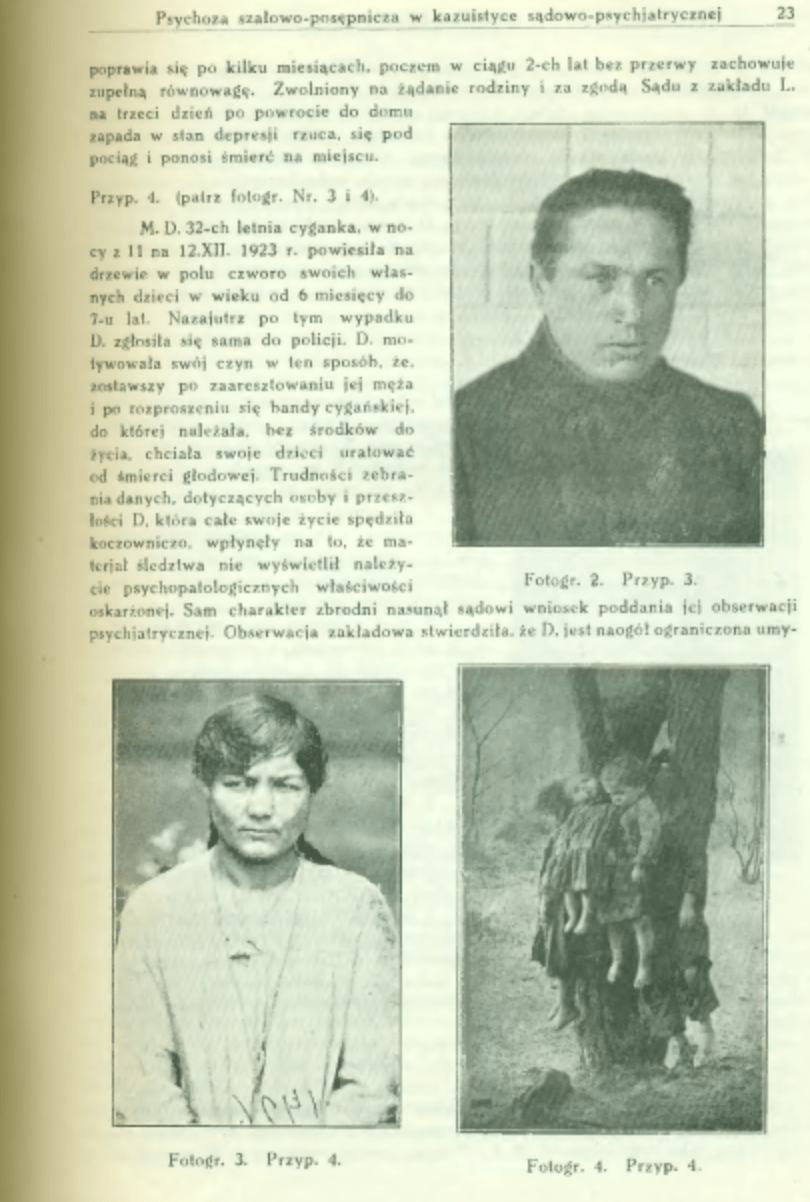
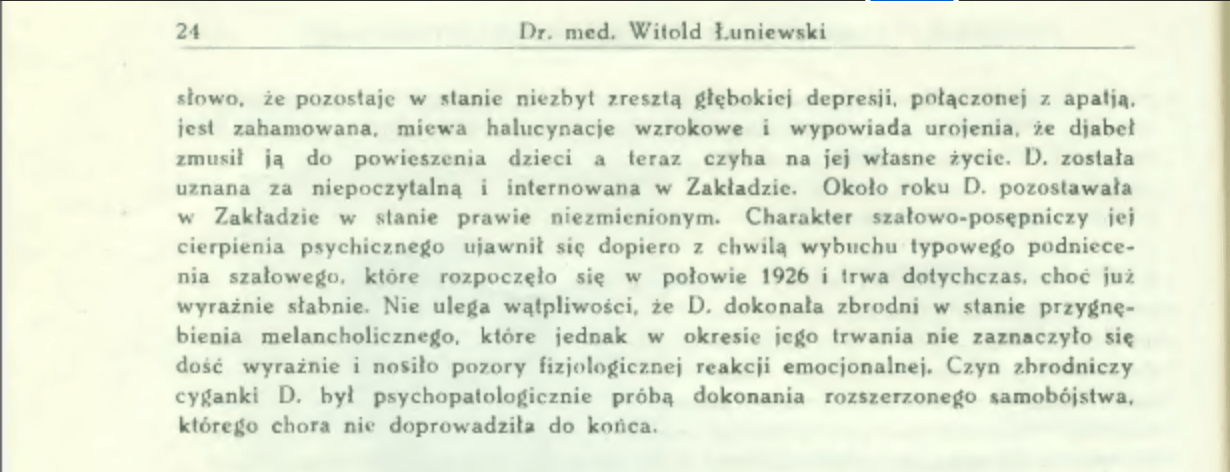
The story of Marianna Dolińska was described by Witold Łuniewski in his article Psychoza szałowo-posępnicza w kazuistyce sądowo-psychiatrycznej (Psychosis in Forensic Psychiatry) published in Rocznik Psychiatryczny (Polish Psychiatric Association’s journal) in 1928:
A very similar photo appeared twenty years later in „Podręcznik medycyny sądowej dla studentów i lekarzy” (Textbook of Forensic Medicine for Students and Doctors) by Wiktor Grzywo-Dąbrowski. As we read on page 406:
The following case was described by Łuniewski:
In 1923, a 32-year-old gypsy woman hanged her four children aged from 6 months to 7 years on a tree in a field, and then reported to the police on the next day. She claimed that she did that because after the dispersion of a local gypsy group, she found herself destitute and thus wanted to save her children from starvation. Examination and observation in a psychiatric hospital showed that she committed the crime in a state of severe periodic psychosis during a period of deep depression (Figure 528).

And further, on page 408, there is a picture to which the above quote refers:

In his Manual, Grzywo-Dąbrowski refers to Łuniewski’s text published in Rocznik Psychiatryczny. Witold Łuniewski was the director of the Psychiatric Hospital in Tworki in the years 1919-1940, and thus had direct access not only to the files of Marianna Dolińska, but also to the patient herself. Dolińska died in 1928 and was buried in the hospital graveyard.
Unfortunately, all the files, documents and medical records from those years, as well as the graveyard itself, did not survive World War II. According to the administration of the facility, the Tworki Hospital was the only operating psychiatric hospital in the occupied Polish territories during the war and was controlled by the occupying troops, who destroyed all traces of the hospital’s previous activities.
This thesis is confirmed in the study Zagłada chorych psychicznie: pamięć i historia (Extermination of the mentally ill: memory and history) under the editorship of prof. Tadeusz Nasierowski. According to Nasierowski, the functioning of the Tworki Hospital during the German occupation was intended to hide the mass extermination of psychiatric patients, known as Aktion T-4.
However, thanks to the indexation program of civil status records implemented by the Polish Genealogical Society, a digital version of the parish books is available, in which there is a record of Marianna Dolińska’s death and burial place.
Therefore, it seems that the case of Marianna Dolińska has been solved.
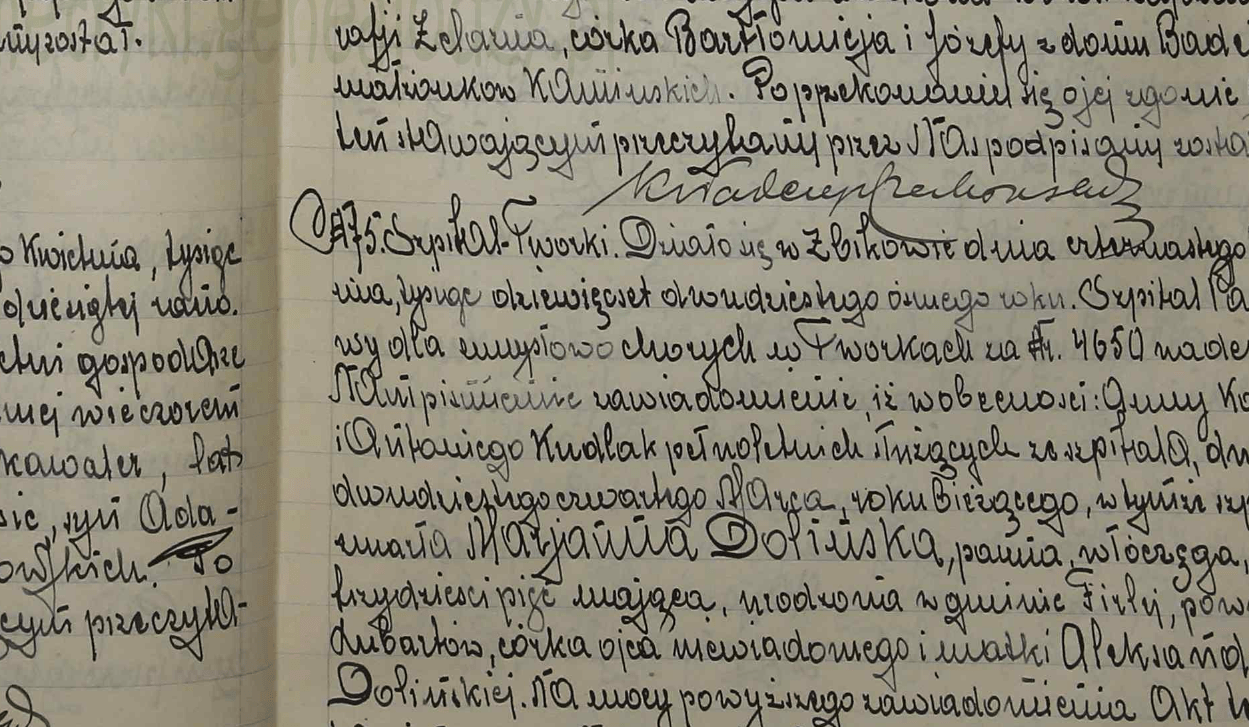
Wydaje się więc, że sprawa Marianny Dolińskiej została rozwiązana.
Disinformation, fake news and anti-Ukrainian narratives
A photograph depicting the gruesome act committed by Marianna Dolińska was used repeatedly for manipulation, disinformation or, in modern language, to create fake news.
The first documented case of using the photograph to spread disinformation is an article published in Kurier Warszawski on 2 July, 1941 (!). The magazine used the photograph to describe Bolshevik crimes that were to be discovered by the Polish Army in 1919, i.e. four years before the actual murder.
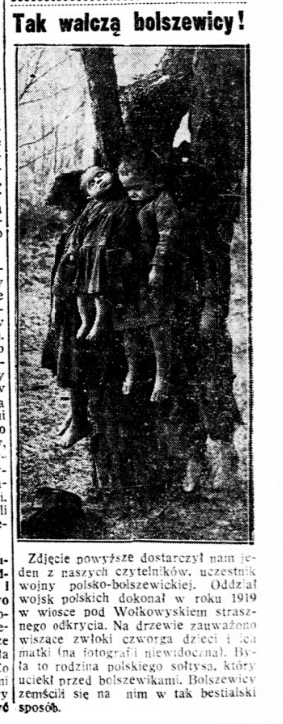
In the article Wianek i rysy. Sprawa Marianny Dolińskiej, Herczyńska claims that it is not known exactly for what reason and at what exact moment this photograph was associated with the crimes of the UPA. The oldest article she managed to find dates back to 1993. A short mention was published in the Wrocław magazine “Na Rubieży” (On the Crossroads) issued by the Stowarzyszenie Upamiętnienia Ofiar Zbrodni Ukraińskich Nacjonalistów (Association for the Remembrance of Victims of Crimes committed by Ukrainian Nationalists), where Dolińska’s children were described as “Polish children tortured and murdered by a unit of the Ukrainian Insurgent Army (UPA) near the village of Kozów, in the Ternopil Voivodeship, in the autumn of 1943.”
The photograph became so strongly associated with the crimes of the UPA that it even found its way to the cover of an album Ludobójstwo UPA na ludności polskiej. Dokumentacja fotograficzna by Aleksander Kroman, published by Nortom.
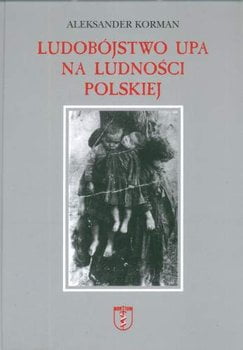
In Przemyśl, an element modelled on the photo of Dolińska’s children was added to the monument commemorating the victims of the UPA’s crime:
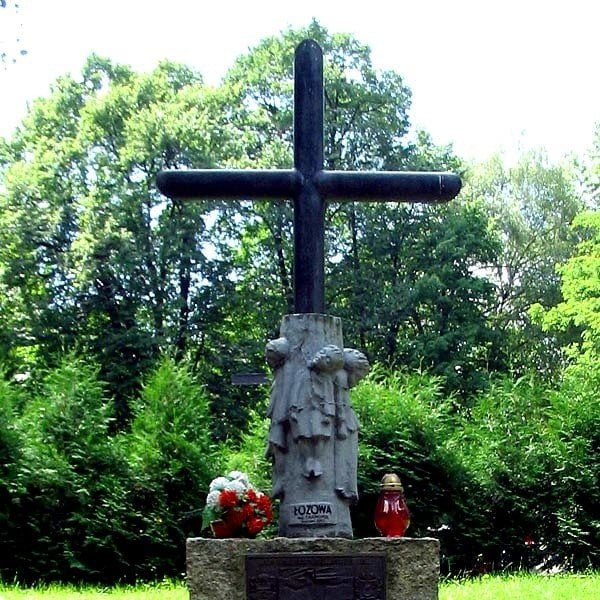
The aforementioned part of the monument was dismantled on the order of the deputy president of Przemyśl. At this point, it is worth recalling another contemporary manipulation attempt:
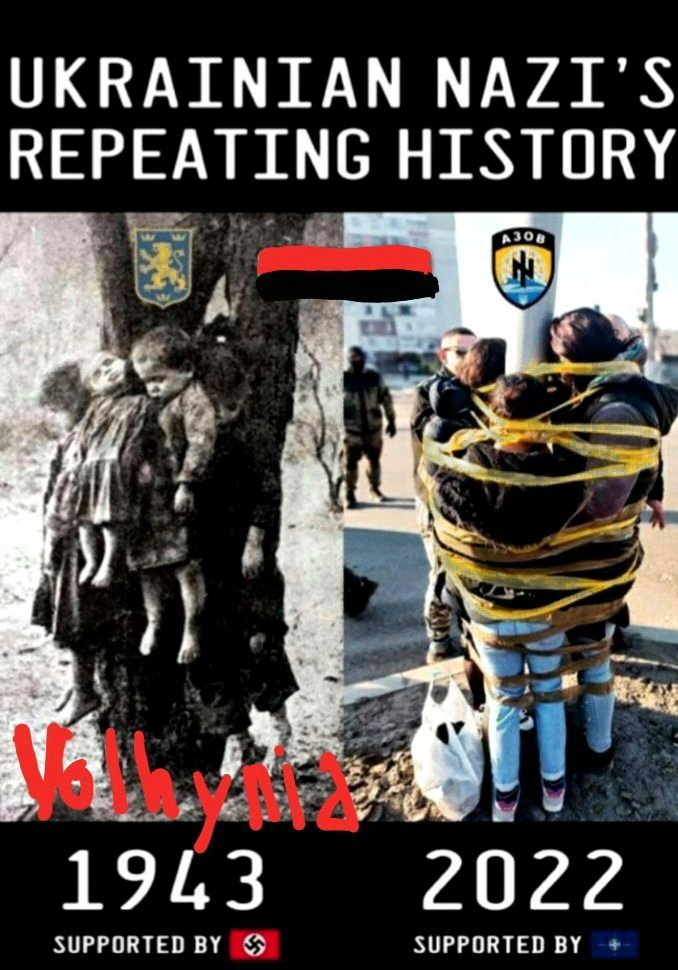
This is a double manipulation because the photo of Dolińska’s children was also used to spread disinformation. The author of this fake news is not only trying to attribute responsibility for the crime against children to Ukrainian nationalists from World War II, but also the responsibility for tying people to street posts to contemporary extreme Ukrainian movements. A gloomy joke of history is the fact that both pictures depict people of Romani origin, an underprivileged group whose voice is absent from public discussion. We wrote about the practice of attaching people to street posts on our website – a full analysis can be found here.
Summary
Some images documenting individual, personal tragedies are used in a discourse related to collective memory to the extent that they become detached from the actual situations they present, and become symbols of topics such as “war crimes” or simply “human evil”. The loss of the original context can then be used to spread disinformation, create fake news and broadly understood manipulation.
It is worth remembering that it is much easier to use such photos in disinformation activities, as no one will claim them anymore. That is why it is so important to recall the proper context of the photo depicting the crime committed by Marianna Dolińska.
Sources
CorwdTangle: https://apps.crowdtangle.com/
Histmag.org: https://histmag.org/Eugenika-eksperymenty-na-ludziach-i-ludobojstwo.-Lekarze-w-sluzbie-III-Rzeszy-22369
Księgi Parafialne Parafii Pruszków-Żbików: https://metryki.genealodzy.pl/metryka.php?ar=2&zs=0080d&sy=6055&kt=2&plik=070-075.jpg#zoom=1.5&x=2142&y=1842
Kurier Warszawski: https://polona.pl/item/nowy-kurier-warszawski-1941-nr-154-2-lipca,NzkyMjAwMA/0/#info:metadata
Nortom.pl: https://nortom.pl/product/ludobojstwo-upa-na-ludnosci-polskiej-dokumentacja-fotograficzna-2/
Nowiny24: https://nowiny24.pl/ogolocony-pomnik-ofiar-upa/ar/6020041
Rocznik Psychiatryczny: https://pbc.gda.pl/dlibra/doccontent?id=53110
Szpital Tworkowski: https://tworki.eu/
TrackMyHashTag: https://www.trackmyhashtag.com/
Widok. Teorie i Praktyki Kultury Wizualnej: https://www.pismowidok.org/pl/archiwum/2019/24-de-formacje/wianek-i-rysy.-sprawa-marianny-dolinskiej
Grzywo-Dąbrowski, W. (1948). Podręcznik medycyny sądowej dla studentów i lekarzy. Warszawa: Lekarski Instytut Naukowo Wydawniczy.
Nasierowski, T., Herczyńska, G., & Myszka, D. M. (2012). Zagłada chorych psychicznie. Pamięć i historia. Warszawa: Eneteia.
